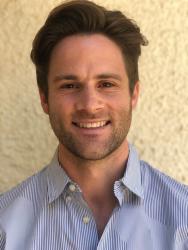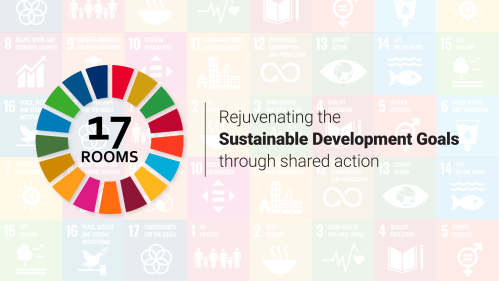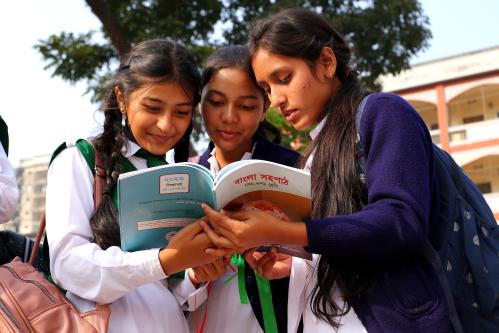The Sustainable Development Goals (SDGs) are ambitious targets that the world agreed to achieve together. Yet, for many people, the SDGs can feel unapproachable—too big, too jargon-laden, and too U.N.-centric to be useful. As the world considers how to do things differently for the second half of the SDG era, an important frontier for progress will be communities everywhere feeling more able to take the Goals into their own hands to advance local action.
But spurring sustained, community-wide action on the SDGs—on specific Goals and across all Goals in concert—is no simple task. Universities embody this challenge. They are mission-driven communities seeking comprehensive societal impact across areas of research, education, and community engagement. At the same time, universities are often highly disparate and decentralized, representing a diverse range of interests and objectives housed within long-standing disciplinary silos.
By now, many of the world’s universities have embraced the SDGs as a framework for institutional priorities. Far fewer appear to have cracked the code for transforming SDG aspirations into SDG action and outcomes. How to orchestrate community-wide action on the SDGs within universities and other local settings remains an open question.
17 Rooms and universities
In this context, in the past several years, more than a dozen universities across the globe have been drawn organically to experiment with 17 Rooms. In any 17 Rooms exercise, participants gather into working groups (or “Rooms”), usually one per SDG, to explore and advance actionable next steps relating to the SDGs. Action ideas are then shared to spot opportunities for cooperation that bubble up across Rooms. Offering an efficient way for multistakeholder groups to come together, share insights, and catalyze collaboration spanning a full range of issues that communities typically care about, universities have adopted and adapted 17 Rooms to suit their local contexts and objectives (see List 1 for list of 17 Rooms-U experiments).
Recognizing an opportunity to take stock of key learnings from these efforts, in June 2023, a group of two dozen university leaders gathered virtually in a Brookings-hosted roundtable to share and assess a diverse cohort of 17 Rooms-U experiences. The aim was to understand why universities were seeking out the 17 Rooms approach and to distill common lessons from their attempts to transition from SDG-related aspirations and ambitions to community-wide action.
Roundtable participants confirmed that 17 Rooms proved useful for pursuing a range of objectives. It offered universities a neutral space for “having conversations about the SDGs” and empowering “…community groups to see a shared commitment that crosses boundaries.” In turn, practically focused SDG conversations helped catalyze “a very specific set of deliverable actions … co-created by the whole university community: faculty, students, and staff.” And in several cases, 17 Rooms helped build momentum for strategic objectives that align with sustainable development priorities, such as helping inform pioneering “Voluntary University Review” processes (a variant of the U.N.’s country-level Voluntary National Review for the SDGs and the more recently developed city-level Voluntary Local Review), ensuring prominence of sustainability issues in university strategic planning processes, launching new institutional strategic initiatives, or appointing special SDG advisors and SDG-focused working groups.
Alongside celebrating this range of positive outcomes, roundtable participants recognized the practical challenges associated with implementing 17 Rooms in the university setting, including constraints around timing and formatting of convenings, difficulty connecting with and motivating stakeholders, or securing resources to support emerging action ideas. As one participant summarized, the task for 17 Rooms organizers involves “integrating the [17 Rooms] process into the already overstretched faculty workflow, and … recruiting participants to stick around for the whole initiative without guaranteed resources.”
Five Ps for community-wide action on the SDGs
Participants converged on several practical lessons about spurring community-wide action on the SDGs from implementing 17 Rooms in a university setting. Summarized below as “Five Ps”—people, preparation, purpose, products, and pathways—these lessons are relevant to communities anywhere looking to mobilize multistakeholder collaboration on various issues in parallel.
1. Start with people
Collaborative action begins with collaborative people. 17 Rooms organizers emphasized beginning the process by connecting with leaders willing to champion the initiative. In most cases, central university leadership (e.g., a university president, provost, or vice provost) was pivotal for allocating staff time and resources to the exercise. Motivated faculty members, staff, and students were crucial to leading Room meetings and driving action follow-through. Organizers also cited the importance of external partners and stakeholders (including research partners, government representatives, and community organizations) to extend the reach of action ideas beyond campus. For any community-wide exercise like 17 Rooms in which collaborative action is the goal, people are paramount.
2. Commit to careful preparation
Breaking from “business-as-usual” requires careful planning and design to carve out time and attract buy-in amid busy schedules and competing priorities. This is particularly the case for universities that operate on an annual teaching cycle. Roundtable participants shared that careful preparation and planning was required to connect with the right people, identify the core objectives for a 17 Rooms exercise, and decide how it should be scheduled and formatted within an academic year to maximize community-wide participation and support.
3. Articulate a compelling purpose
Developing clearly defined and compelling value propositions for different participants—faculty, staff, students, and external partners—helped mobilize energy and excitement for 17 Rooms. Prospective 17 Rooms organizers can start by thinking about the specific possibilities that can emerge out of community-wide action, and how that action might be helpful for what potential participants already care about. When talking to key community stakeholders about 17 Rooms, it helps to articulate the why before the what.
4. Develop tailored products
Easy-to-use products, tools, and approaches can help structure and facilitate community-wide action while maintaining flexibility for local adaptation. Suggestions for improving on the 17 Rooms “beta” guidebook of tools included generating a refined menu of 17 Rooms tools tailored to specific organizer and participant goals such as raising awareness of the SDGs or adapting 17 Rooms to new contexts such as a university course. Global conversations and communities of practice were deemed important as “additional ladders to help pull us out of local networks”—providing that these opportunities remain anchored in specific shared objectives rather than detracting from local priorities. To this end, an annual 17 Rooms Day was floated as an idea for future development. It could be held each year in September, prior to the high-level gatherings of the U.N. General Assembly, to coordinate across all 17 Rooms exercises held that year.
5. Establish clear post-convening pathways
A neutral space for talking about the SDGs is great. But constituencies everywhere are increasingly keen to see conversations lead to concrete action. The challenge with 17 Rooms, as one participant put it, is to “foster ownership and resources for action ideas” and to “move from aspirational action to deliverable action within a resource-constrained environment.” 17 Rooms-U experiments surfaced a range of mechanisms to help Rooms develop and implement action ideas, including involving community partners and other community resource brokers directly in Room conversations and as “VIP Listeners” to presentations of each Room’s action plans) or providing catalytic financial support for good action ideas. In general, organizers agreed on the need to create space for different types of success and clearly articulate “what comes next” for all participants once Room conversations conclude.
Conclusion
Local leaders everywhere face a difficult tension between the immense benefits that can result from organizing community-wide efforts like 17 Rooms and the organizational effort that these exercises demand. Over several short years of experimentation, 17 Rooms-U efforts have surfaced key lessons—around people, preparation, purpose, products, and pathways—to help navigate this tension. Peer learning and iterative testing will be required to further refine the tools, resources, and opportunities needed to make the Goals practical and approachable within universities and other community contexts.
List 1. 17 Rooms-U exercises
- International University of Sarajevo (Bosnia, February – May 2023) incorporated 17 Rooms into an introductory course to sustainability; students learned about the 17 SDGs before formulating and driving specific collaborative actions.
- Atlantic Technological University (Ireland, January 2023) used 17 Rooms to help kickstart the university’s strategic planning process with faculty and staff.
- Faculty members of University of Nigeria (Nigeria, July – October 2022) used 17 Rooms to spur research projects that addressed critical and interwoven economic, social, and environmental crises facing Nigeria.
- University of Central Florida (U.S., May 2022) was part of a cross-sector organizing team that used 17 Rooms to convert a regional sustainability action plan into actionable next steps over a 12-month horizon. Actions are now being tracked using a public dashboard.
- Concordia University (Canada, February – June 2022) organized a novel ‘17 Rooms in 17 weeks’ format that stimulated pragmatic conversations and surfaced actionable priorities that fed into a “Voluntary Local Review” (VUR).
- A “deep dive” 17 Rooms exercise helped George Mason University (U.S., May – October 2021) surface and coordinate SDG-related research, teaching, and community engagement activities. Nine action ideas have been funded through a seed funding mechanism.
- Queen’s university (Canada, June 2021) used 17 Rooms to help mobilize action-focused networks of faculty, staff, and students across the SDGs and build practical momentum for aligning the university’s strategic priorities with SDG outcomes.
- 17 Rooms helped University of Toronto (Canada, December, 2020) faculty, staff, and catalyze momentum for an university-wide interdisciplinary research and teaching initiative focused on the SDGs.
- 17 Rooms helped Georgia Institute of Technology (U.S., October 2020) develop community-driven action recommendations that to align with the Institute’s new strategic plan with SDG outcomes
- 17 Rooms helped Carnegie Mellon University (U.S., May 2020) solicit information on how research, teaching, and community engagement align with the SDGs. Results informed a world-first VUR.
- University Global Coalition organized a cross-university 17 Rooms experiment at Rutgers University (U.S., September 2019) attended by faculty and organizational leaders from more than 65 different institutions.
- Tecnológico de Monterrey (Mexico, July 2019, February 2020) organized a 17 Rooms pilot to increase awareness of the SDGs and related activities already taking place at the School. A second trial of 17 Rooms in February 2020 helped more than 400 senior university council members consider Tec’s role in advancing the SDGs through partnerships with municipal government and industry stakeholders.
- 17 Rooms helped Universidad Politécnica de Madrid’s (Spain, July 2019) identify critical actions needed to advance key strategic missions such as achieving decarbonization of UPM by 2030.







Commentary
University action on the SDGs: 5 lessons from 17 Rooms-U experiments
September 8, 2023